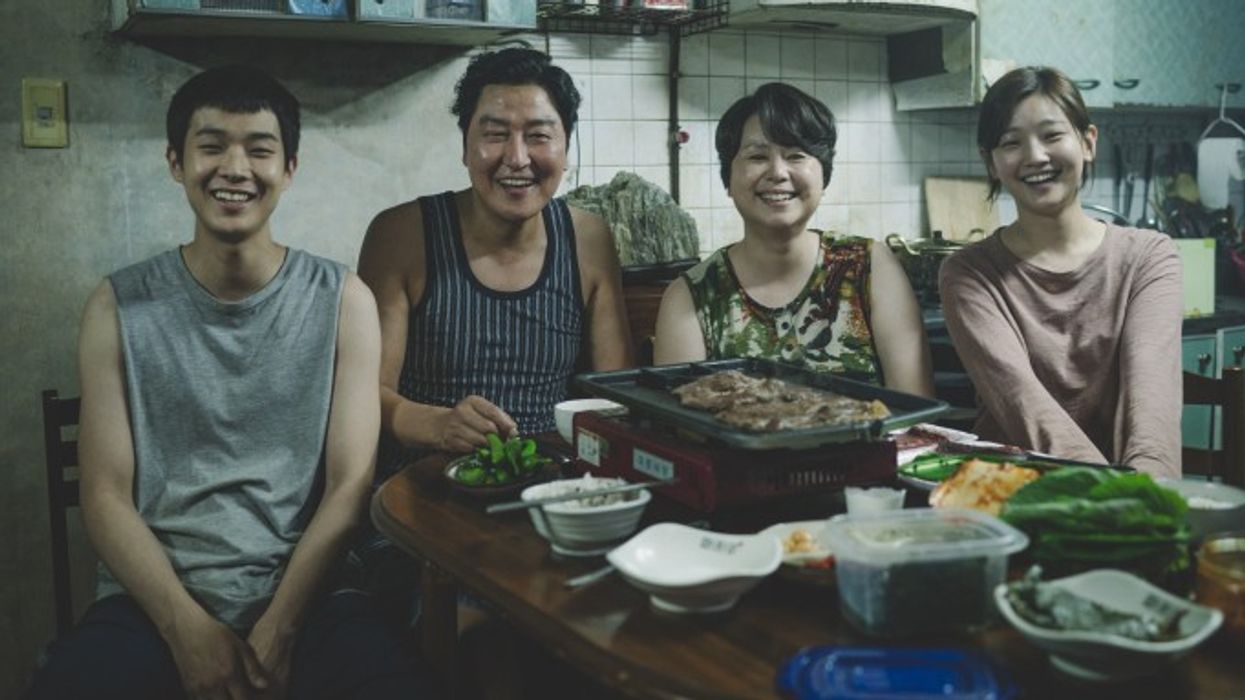How 'Parasite' Made One of the Greatest Montages Ever
Here's how Parasite director Bong Joon-Ho get sixty shots in five minutes for one of the best sequences in movie history.

There's something about great movies that move you. It's the way they make you feel and the way they make you concentrate on what's in front of you at any moment.
The montage at the end of the first act in Parasite is one of those sequences emblematic of a great film. Let's talk about what happens in that part of the story and how it sets us up for everything that follows.
Check out this video from Nerdwriter about this exceptional montage.
At the heart of every montage is a specific rhythm and cadence. It can be the beating of a drum or the eye of a tiger, but montages tell a story within a story. Frequently used to show the passing of time or plot points, they're the connective tissue that pushes your journey forward.
Parasite both honors and subverts that, which only bolsters the scene's effectiveness and emotional impact.
At surface level, the montage reveals how the family works to get their mother hired as the housekeeper and to get the other woman fired. Subtextually, it's about the cunning and conniving lengths they're willing to go to in order to secure their future.
This all occurs at the end of the first act and sets up a family who thinks they're in control, only to realize they're not the ones pulling the strings.
How how does the montage convey all these details?
Classical music, slow motion, and linear cameras moves help connect all sixty of the scenes shown in the five-minute montage.
Shots mirror themselves as a story arc is built into the action; How will they get rid of the housekeeper?
There's an economy here, we get a story detail, the housekeeper is allergic to peaches, and eight shots later we see her poisoned. These shots line us up and knock us down by mirroring one another.
We have an intercut of the family rehearsing their lie, with the lie actually being enacted. As they achieve desired results, we see them growing closer together and feeling more in control.
This thematic closeness and control are echoed by both the editing and cinematography. We see family members framed together instead of apart, and the editor mashes takes together and transitions to show them gaining the trust of the people they work for.
But even as the montage finishes, the rest of the movie is about to dash that control against the rocks -- just when we come out of the montage the doorbell rings and changes the story completely.
This montage, set to classical music, has seemingly lulled us into a false sense of security. Now, there's an opportunity to rip the rug out from under us. In this way, the montage has worked on three layers.
The first way to move the story along, the second was to lull us into a false sense of security, and the third was to trick us into thinking this movie was about one thing so that when the doorbell rings all bets are off.
What's next? Click here for 10 Kinds of Montages!
There's nothing quite like a montage. Think about it -- montages are wholly cinematic, born entirely from the womb of editing, and are able to elicit emotions from an audience simply by the way they're constructed.











